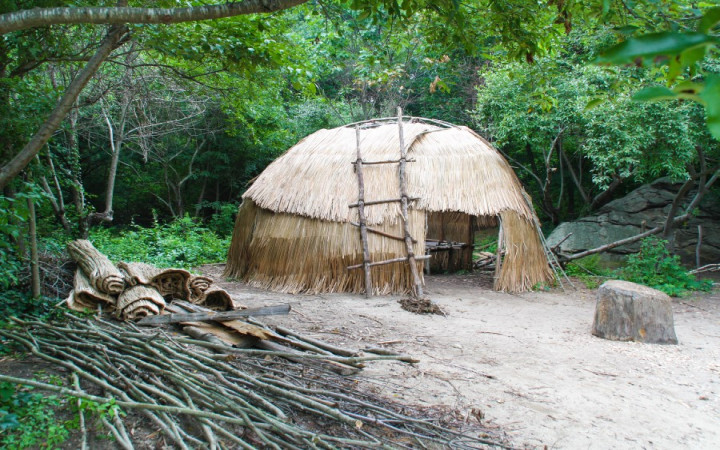Today’s Wonder of the Day was inspired by Angel from washington dc, DC. Angel Wonders, “what are wigwams” Thanks for WONDERing with us, Angel!
Have you ever WONDERed what life was like for Native Americans long, long ago? When you've studied Native Americans in school, you've probably seen pictures of some of the structures they used as houses. In fact, you're probably quite familiar with the teepee. But did you also know that some Native Americans made structures called wigwams?
Wigwams are round, domed huts that were used by many different Native American cultures. Tribes in the Northeastern United States usually called these structures wigwams, while tribes in the Southwestern United States often called them wickiups. The Wampanoag tribe used the word wetu for these structures.
The curved surfaces of the wigwam made them an ideal shelter in many different types of climates and even the worst of weather conditions. To build a wigwam, Native Americans normally started with a frame of arched poles that were usually made of wood.
Male tribe members were responsible for creating the wigwam frame. They would need to find many young tree saplings that were between 10-15 feet long. A large circle (10-15 feet in diameter) would be drawn on the ground, and the saplings would be spaced an equal distance apart. Then, they would be bent toward the middle and tied together to form the arched frame.
The female members of the tribe would then cover the frame with roofing material that varied by region. Different materials were available in different locations, so some wigwams might be made of birchbark while others were made of grass, brush, rushes, mats, reeds, animal hides, or even cloth. The finished wigwam made a small home that was 8-10 feet tall.
The term wigwam is sometimes used interchangeably with the term teepee. However, wigwams and teepees (sometimes spelled tipis) were very different structures with different uses and different methods of construction.
Teepees were temporary dwellings used by nomadic tribes and hunting parties of the Great Plains Native Americans. Unlike wigwams, teepees were not meant to be used for extended periods of time. Instead, they were easy and simple to construct, since they were intended to be portable.
Teepees were usually made with a few wooden poles and animal skins as coverings. Wigwams often took days to build, whereas teepees could often be disassembled and reassembled elsewhere in a matter of a few hours.
Teepees also differed from wigwams in their use of smoke flaps and an opening at the top. These features allowed teepee users to cook inside and control the amount of smoke. It also helped to keep teepee users warmer, since teepees featured less cover and insulation compared to the more-permanent wigwam.
Wigwams would usually be used for months at a time. For example, a Native American tribe might build wigwams to be used throughout the entire course of the farming season. When winter would come, they would move to a temporary hunting camp. Their wigwams were not portable, so they simply left them. If they survived the winter, they might reuse them. If not, they would simply build new wigwams the following season.




